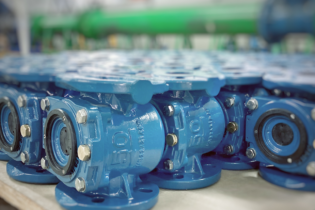Nearly 40% of the world’s population suffers from a shortage of water. By 2050, this number could reach four billion. Spain, Mexico, California and the Arab Peninsula have already opted for the desalination of brackish or seawater to meet their needs; but can this option be viewed as sustainable?
According to leading desalination specialist Degrémont, not only is it sustainable, but it is also the answer to the rising need for domestic and industrial water, given that 97% of the available water on earth is salty. “Desalination consists of extracting the salt from salty or brackish water to make it suitable for drinking or usable by industry or for irrigation. In 10 years, production costs have been divided by a factor of two, thanks to the efforts of the water treatment industry and the manufacturers of membranes and equipment, like pumps, turbines and pressure exchangers,” says Degrémont marketing manager for Southern Africa, Francine Dubreuil. Distillation is the oldest technology used; however, reverse osmosis – a membrane-based separation process that enables more then 99.9% of the salts present in the water to be captured – is the most recent technique. Dubreuil explains that Degrémont is recognised as the pioneer of desalination through reverse osmosis since the first installation on Houat Island in France in 1969. Currently,the company has 250 references worldwide, serving 10 million inhabitants with two million cubic metres produced. Some 500 000 m³/d of water is produced by plants operated by Degrémont. The flexible solution offered by Degrémont is not only tailor-made to each project, but the team analyses the raw water quality, examines the environmental impacts and defines the appropriate line technology, ensuring the sustainability of the solution. “The solution is also suited to all contexts, such as being used in coastal areas to treat seawater, or inland to treat brackish water. The freshwater production is also automatically adjustable according to seasonal variations.” This is particularly pertinent when considering that 42 of the 70 cities with more than one million inhabitants globally without direct access to additional freshwater resources are located on the coast.Economics versus ecology
Ultimately, when discussing the sustainability of a solution, the ecological aspects or environment needs to be a primary priority. This has not always been considered a major attribute of desalination solutions; however, with the Degrémont’s solution the environment is protected, according to Dubreuil. “Special design of the water intakes ensures no impact on the aquatic environment, and treatment of washing water before discharge and diffusion of brine allows this to be accomplished without disrupting the aquatic equilibrium.” In addition, energy needs can be met from renewable energy sources such as wind, tidal or solar power. However, the implications on the cost also need to be sustainable. Costs are controlled with a combination of standardised processes, says Dubreuil. “Greater yield is gained from reverse osmosis units and membrane longevity owing to the efficiency of the purification treatment. There is also reduced consumption of external energy through the use of recovery systems.” As a major environmental player, Degrémont not only offers its customers sustainable solutions, but whatever the customer’s problem, Degrémont can propose the right technical and economic solution – up to and including financing, concludes Dubreuil.






